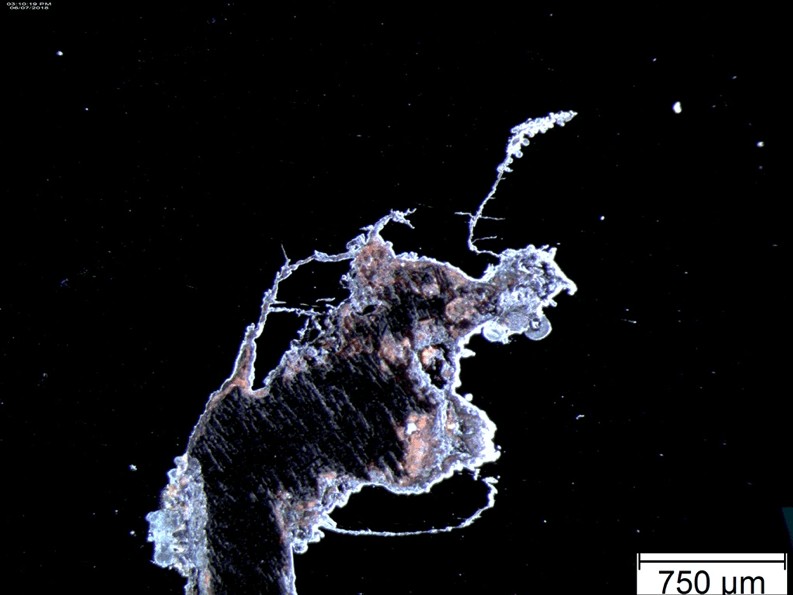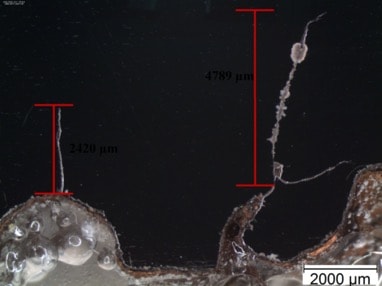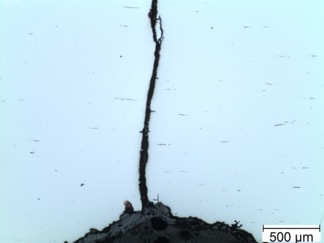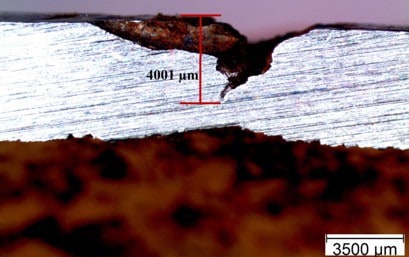Traditional corrosion fatigue tests can take months or even years to complete. Given the pace of modern industrial operations, a faster method was needed – so we developed it. Accelerated corrosion fatigue testing based on the RSL method provide the fastest proven method for quantitatively evaluating corrosion fatigue susceptibility. While traditional tests focus on one loading level, our system systematically increases the load until we find the threshold for fatigue cracking.





Can You Control the Environment for Fatigue Testing?
Yes! Fortunately, we have several different environmental chambers and electrochemical control systems for simulating the conditions within your system. If needed, we can also build customized systems to better mimic your application.
What is Corrosion Fatigue?
Corrosion fatigue occurs when corrosion happens in an environment where the material is experiencing cyclic loading (which leads to fatigue). Since most structures experience some type of cyclic loads, corrosion fatigue can be observed in many different types of applications from bridges to offshore structures. Depending on the extent of corrosion, sometimes corrosion fatigue is just called ‘fatigue’ but the reality is that corrosion can accelerated the start of a corrosion fatigue crack by years or even decades, even if it’s just a small pit.
What is the Critical Fatigue Flaw Size?
When fatigue occurs, it often requires a flaw of a certain minimum size before it can start propagating. In relatively ductile materials, the flaw size may be 5% or more of the wall thickness. However, in very high-strength or brittle materials, the minimum flaw size can be tiny: even just a few microns deep. In these materials, even the smallest amount of corrosion can provide the starting force for cracks to grow. By evaluating your actual materials in an appropriate environment with RSL, you can determine the minimum fatigue flaw size accurately.
How can you speed up fatigue testing?
With normal corrosion fatigue tests, you must run at a given speed until a crack is observed. Generally the speed and amplitude are held constant throughout the tests, meaning many tests can be required to determine the threshold where fatigue cracking occurs.
In contrast, by using the RSL technology, we can gradually increase the load in small steps until we find the threshold when fatigue cracking occurs. With a single test, we can answer what otherwise may take weeks or months of work with slower methods.
What are the benefits of accelerated corrosion fatigue testing?
Corrosion fatigue testing can take months and cost tens or hundreds of thousands dollars. In contrast, our accelerated testing can be performed for a few thousand dollars and within a week or less in most cases. This can allow you to test a much broader range of candidate materials, heat treatment conditions, coatings, or other variables in a faster and more economical fashion.